Star Quest is a science fiction board game published by Operational Studies Group (OSG) in 1979.
Contents

Star Quest is a science fiction board game published by Operational Studies Group (OSG) in 1979.

Star Quest is a game of space combat for 2–6 players. Each player represents an interstellar trading house that has sent a spaceship to a newly discovered star system in order to destroy all other ships and take control of the system. [1]
The plastic bag holds: [2]
The game starts as ships hyperjump into the star system, ending at a random location. The initial hyperjump is quite risky — if the player rolls a 6 on a six-sided die, the ship is destroyed and the player is out of the game. [1] If a ship is moved by hyperjump later in the game (moving again to a random location), there is no chance of destruction. [1]
Using "normal" movement, ships travel in a straight line, with momentum from the previous turn carried over to the next turn. The gravitational effects of the star are felt at close range. [2]
The ships fight by firing missiles at one another; each ship can control up to six missiles at a time. [2] If a missile and a ship intersect, the missile is deemed to have exploded and destroyed the ship. Both are removed from the game. [2]
The last player to survive is the winner. [2]
In 1977, Cinematronics released a shooter video game titled Space Wars that pitted two players against each other, flying spaceships around a sun, firing missiles, and using hyperjump to move to a random location on the screen. It became the 4th highest grossing arcade game of 1978 in the United States. [3] The following year, Ed Curran and Tom Walcyk designed a microgame based on Space Wars titled Star Quest, which was released by OSG packaged in a plastic bag. [1]
In Issue 33 of The Space Gamer , Robert D. Buskirk found the rules "very clear", and liked that it was a very fast game. However, he didn't like the components, finding the hex numbers on the map hard to read, and the light blue and dark blue counters too similar. However, he did note that for a small and short game, "Play can become very tense, and with two players, it often has the flavor of a duel." He thought that although the rules were clear, learning them and how to pre-plan several turns in advance required experience. He concluded by giving the game a below average score of 5 out of 10, although he admitted, "After you learn it, Starquest can give you a challenging, fast game, even with its problems." [1]
In the inaugural issue of Ares Magazine , Steve List thought this was a reasonable game for its size and price, commenting "As a space combat game, it is morer realistic than most, in that it almost obeys the laws of physics." He also noted that the game required players to both "plan ahead and react quickly." He concluded by giving it a below average score of 5 out of 9, saying, "If one ignores the rationale (the game is based on a coin-operated game), and the minor inconvenience of photocopying the plot sheets, it is a serviceable little game." [2]
In the October 1980 issue of Fantastic , game designer Greg Costikyan wrote "Ships fight by firing missiles at each other. They may use 'hyperspace' movement, in which case their new position on the board is determined randomly — if this is beginning to sound like a noted video space game, there's no coincidence. Star Quest is the Space Wars video game, put in boardgame format; the differences are rather minimal. Save your $4; 16 quarters will get you a good number of minutes on the Space Wars machine at your local pinball parlor, and your time will be better spent." [4]
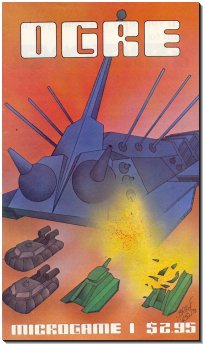
OGRE is a science fiction board wargame designed by the American game designer Steve Jackson and published by Metagaming Concepts in 1977 as the first microgame in its MicroGame line. When Steve Jackson left Metagaming to form his own company, he took the rights to OGRE with him, and all subsequent editions have been produced by Steve Jackson Games (SJG).

White Bear and Red Moon is a fantasy board wargame set in the world of Glorantha, created by Greg Stafford and published in 1975. Stafford first tried to sell the game to established publishers, but despite being accepted by three different game companies, each attempt ended in failure; eventually he founded his own game company in 1974, the influential Chaosium, to produce and market the game.

Triplanetary is a science fiction board wargame originally published by Game Designers' Workshop in 1973. The game is a simulation of space ship travel and combat within the Solar System in the early 21st Century.
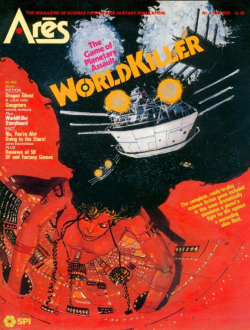
Ares was an American science fiction wargame magazine published by Simulations Publications, Inc. (SPI), and then TSR, Inc., between 1980 and 1984. In addition to the articles, each issue contained a small science-fiction-themed board wargame.
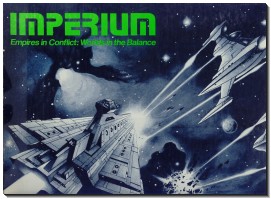
Imperium is a science fiction board wargame designed by Marc W. Miller, and published in 1977 by the Conflict Game Company and Game Designers' Workshop (GDW). It features asymmetrical forces, the two sides having its unique set of constraints. The game came in a cardboard box illustrated with a space battle on the exterior. It included a cardboard-mounted, folding map of a local region of the Milky Way galaxy, a set of rules and charts, and the 352 counters representing the various spacecraft, ground units, and markers, and a six-sided die. A second edition was published in 1990, a third in 2001, and the first edition republished in 2004.
Starfire is a board wargame simulating space warfare and empire building in the 23rd century, created by Stephen V. Cole in 1979.

Redmond Aksel Simonsen was an American graphic artist and game designer best known for his work at the board wargame company Simulations Publications, Inc. (SPI) in the 1970s and early 1980s. Simonsen was considered an innovator in game information graphics, and is credited with creating the term "game designer".

Stellar Conquest is a science fiction board game published by Metagaming Concepts in 1974.
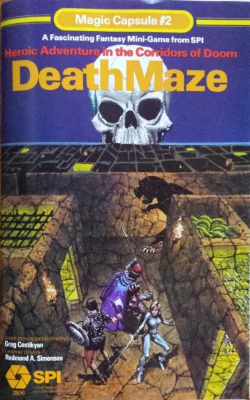
Deathmaze is a fantasy board game published by Simulations Publications (SPI) in January 1980 that falls into the general category of dungeon crawls, more specifically, dungeon games in which players enter a dungeon, massacre the dungeon dwellers and steal their treasures.

Melee is a board wargame designed by Steve Jackson, and released in 1977 by Metagaming Concepts. In 2019, Melee was revived and re-released by Steve Jackson Games.

Solar Quest is a monochrome vector arcade game created by Cinematronics in 1981. It was designed and programmed by Scott Boden, who previously worked on Star Castle. It had a home release for the Vectrex system in 1982.

Universe: The Role-Playing Game of the Future is a science fiction role-playing game published by Simulation Publications, Inc (SPI) from 1981 to 1983. It was praised for its innovative and tightly organized rules for such sci-fi RPG concerns as generating planets, applying character skills to in-game situations, and resolving the initial moments of alien encounters; however, it was also criticized for its cumbersome encounter/combat system and its lack of compelling background material. Universe was also noted for its "striking" Interstellar Display, a poster-sized, astronomically accurate map of all stars within 30 light-years of Earth.

Swords & Sorcery, subtitled "Quest and Conquest in the Age of Magic", is a fantasy-themed board wargame published by Simulations Publications, Inc. (SPI) in 1978.

StarGate is a science fiction board game published by Simulations Publications, Inc. (SPI) in 1979 in which players wage combat via spaceships.
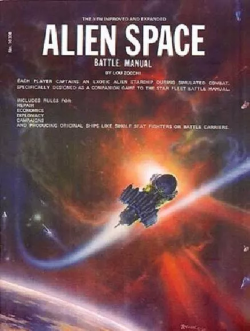
Alien Space is a science fiction board wargame published by Gamescience in 1973 that simulates space combat as seen in the Star Trek television show.
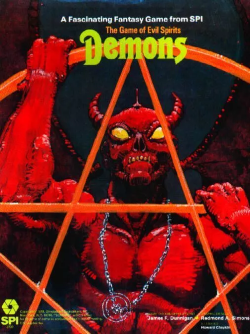
Demons is a board game published by Simulations Publications (SPI) in 1979 in which players control magicians who conjure demons to aid them during a treasure hunt.

Annihilator & One World are two board wargames released in one package by Metagaming Concepts in 1979 as the 14th addition to its MicroGame line.

Double Star is a 1979 science fiction board wargame, designed by Marc Miller, and published by Game Designers' Workshop that simulates interplanetary warfare in a double-star solar system.
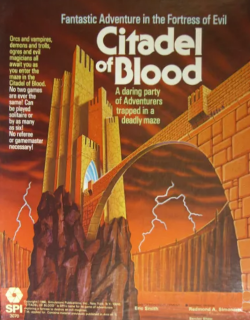
Citadel of Blood, subtitled "Fantastic Adventure in the Fortress of Evil". is a dungeon-crawl board game published by Simulations Publications, Inc. (SPI) in 1980.

WorldKiller: The Game of Planetary Assault is a science fiction board wargame published by Simulations Publications Inc. (SPI) in 1980 that simulates humans in the far future defending a planet against an alien attack.